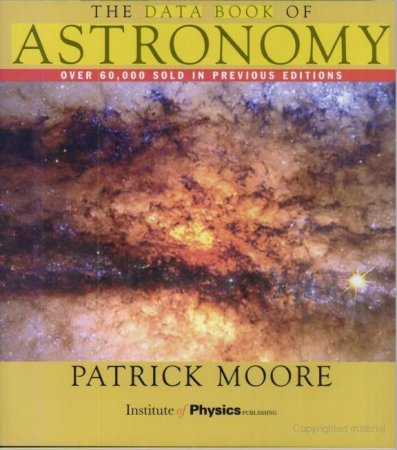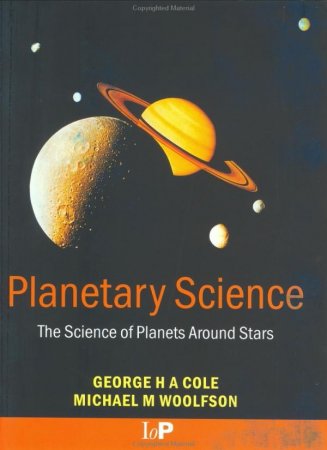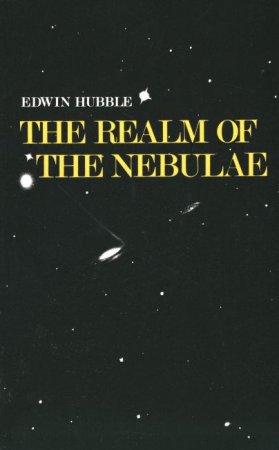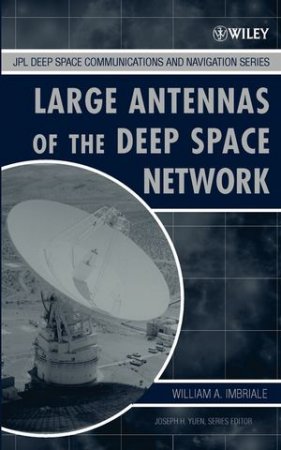НавигацияАрхив новостейСтатистика |
Mechanism of the Heavens MARY SOMERVILLE How to Build a Dobsonian Telescope Astronomy 161 - Introduction to Solar System Astronomy The Data Book of AstronomyThe Data Book of Astronomy is a one-stop reference for astronomers at all levels of experience, from beginners to experienced observers. Filled with data about the Earth, Moon, the planets, the stars, our Galaxy, and the myriad galaxies in deep space, it also reveals the latest scientific discoveries about black holes, quasars, and the origins of the Universe. Written by a premier astronomy expert, this book begins with a discussion of the Sun, from sunspots to solar eclipses. It then features over 100 tables on characteristics of the Moon, and the names, positions, sizes, and other key descriptors of all the planets and their satellites. The book tabulates solar and lunar eclipse, comets, close-approach asteroids, and significant meteor showers dates. Twenty-four maps show the surface features of the planets and their moons. The author then looks to the stars, their distances and movements, and their detailed classification and evolution. Forty-eight star charts cover both northern and southern hemispheres, enabling you to track down and name the main stars in all the constellations. The maps are supported by detailed tables of the names, positions, magnitudes, and spectra of the main stars in each constellation, along with key data on galaxies, nebulae, and clusters. There is a useful catalogue of the world's great telescopes and observatories, a history of astronomy and of space research, and biographies of 250 astronomers who have been most influential in developing the current understanding of the subject. The Science of Planets Around StarsAssuming no prior knowledge of astrophysics or geophysics, this resource focuses on the structure of planets and the stars they orbit and the interactions between them. The book is written in two parts, making it suitable for students at different levels and from differing backgrounds. The first twelve chapters reveal our solar system and the diverse bodies it contains. These are followed by 42 detailed topics that discuss specialized subjects, from stellar formation to exobioloy, in a quantitative manner-essential reading for those in higher level courses. Problems and answers are also included. The Realm of the NebulaeNo modern astronomer made a more profound contribution to our understanding of the cosmos than did Edwin Hubble, who first conclusively demonstrated that the universe is expanding. Basing his theory on the observation of the change in spectra of distant galaxies, called red shift, Hubble showed that this is a Doppler effect, or alteration in the wavelength of light, resulting from the rapid motion of celestial objects away from Earth. Astronomical Algorithms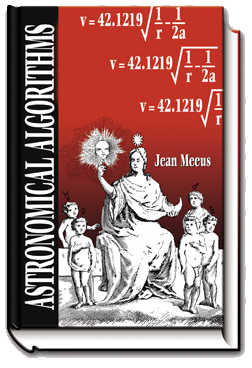 Programming the calculations provided by Meeus is possible using any modern programming language. Meeus covers a wide range of astronomical areas. Diffuse Matter in the UniverseThe book is designed as an astrophysics textbook that provides a comprehensive introduction to the physics of Interstellar Matter. It is aimed primarily at those undertaking postgraduate courses, or those doing advanced projects as part of honors undergraduate courses in physics or astrophysics. It should also provide a handy reference to the field for astrophysics faculty and other researchers who are not necessarily experts in this particular subdiscipline. The objective of Astrophysics of the Diffuse Universe is to show how physics can be applied to the understanding and diagnosis of the phase structure, the physical conditions, and the chemical make-up and evolution of the interstellar medium. Consistent with the authors' lecture and course experience, here a systematic approach has been adopted to assist the development of the reader's insight into the physics underlying the subject. |
ПопулярноеКалендарь
ОпросОцените дизайн сайта
Немного рекламы |
|||||||||||||||||||||||||||||||||||||||||||||||||
